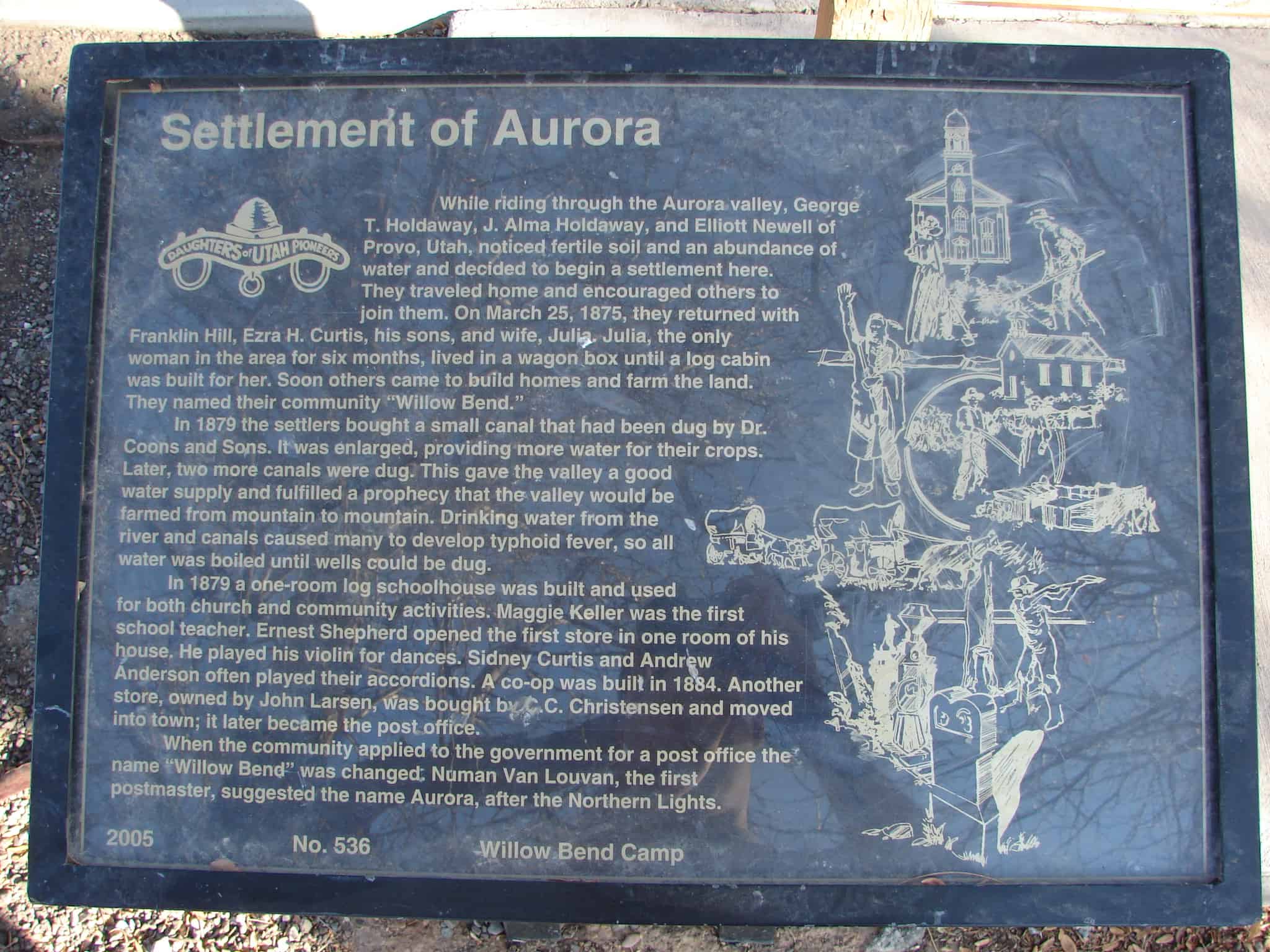Tags

While riding through the Aurora valley, George T. Holdaway, J. Alma Holdaway and Elliott Newell of Provo, Utah, noticed fertile soil and an abundance of water and decided to begin a settlement here. They traveled home and encouraged others to join them. On March 25, 1875, they returned with Franklin Hill, Ezra H. Curtis, his sons, and wife, Julia. Julia, the only woman in the area for six months, lived in a wagon box until a log cabin was built for her. Soon others came to build homes and farm the land. They named their community “Willow Bend.”
In 1879 the settlers bought a small canal that had been dug by Dr. Coons and Sons. It was enlarged, providing more water for their crops. Later, two more canals were dug. The gave the valley a good water supply and fulfilled a prophecy that the valley would be farmed from mountain to mountain. Drinking water from the river and canals caused many to develop typhoid fever, so all water was boiled until wells could be dug.
In 1879 a one-room log schoolhouse was built and used for both church and community activities. Maggie Keller was the first school teacher. Ernest Shepherd opened the first store in one room of his house. He played his violin for dances. Sidney Curtis and Andrew Anderson often played their accordions. A co-op was built in 1884. Another store, owned by John Larsen, was bought by C.C. Christensen and moved into town; it later became the post office.
When the community applied to the government for a post office the name “Willow Bend” was changed, Numan Van Louvan, the first postmaster, suggested the name Aurora, after the Northern Lights.

Other markers placed by the Daughters of Utah Pioneers are found here: (Visit Link)

Pingback: Aurora, Utah (Formerly “Willow Bend”) | JacobBarlow.com